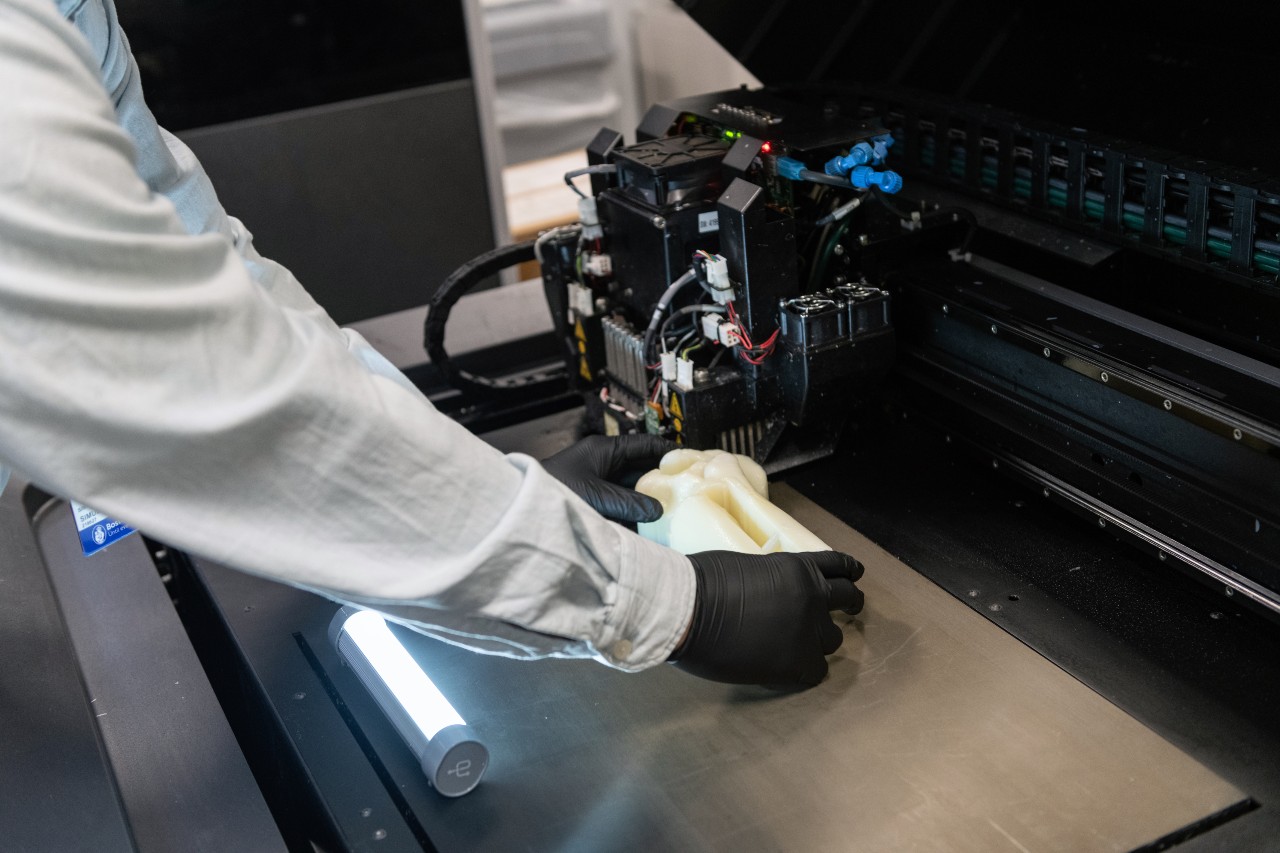Device design and applied engineering to create innovative clinical tools
Innovating immersive experiences through applied engineering and XR
We apply our expertise in organic modeling, 3-D printing, silicone molding, medical device design, simulation trainer development, immersive technologies such as virtual and augmented reality, and 360 videos to provide various solutions to our clinical and non-clinical partners.
We partner with clinicians to develop novel health care devices and advance pediatric-specific training tools. This includes patient-specific device designs, 3-D-printed surgical planning models, and novel medical device prototypes. We work with instructors to create custom physical and digital training tools to enable a variety of immersive learning, from simple skills to complex surgical interventions.
By integrating sophisticated engineering with precise anatomical modeling and 3-D printing, IDS builds true-to-life patient models that serve as training devices for planning complex surgeries. These models allow surgeons to build and refine their ability to treat rare or complex conditions through low-stakes practice. The result: Clinicians gain advanced skills that can fundamentally change the care they provide — and, most important, benefit patients.

Boston Children's Simulator Program steps up during COVID-19
Connecting care providers to engineering design

Collaborators seeking improved care solutions can engage with our engineering team to develop concepts, designs, and prototype products at our studio in the Longwood Medical Area.
We also create patient-specific anatomy for advanced surgical preparation and rehearsal. Our engineering studio transforms patient imaging scans into 3-D anatomic digital and physical models to assist in pre-surgical planning. These anatomic models allow surgeons to deeply understand the patient context and condition, unearthing previously imperceptible details. These nuances often lead to improved outcomes.
We create VR learning experiences that augment the physical world using virtual reality training and tools.
Device design and solutions in action:
- Recent developments include trainers for cleft lip repair, neck and groin pediatric cannulation for ECMO, and infant tracheostomy care. These extremely realistic trainers mimic human anatomy and living tissue, helping participants hone fine motor skills and practice surgical procedures in a safe environment.
- Prior to performing surgery on a 5-year-old with multiple facial fractures, we provided the neurosurgeon with a physical model of the patient’s cranium. This revealed that the patient was missing bone in two areas of their face — something not at all visible via the CT scan. According to the surgeon, this key information as well as practice with the model changed the outcome of the case.
- A 15-year-old patient with severe scoliosis who had undergone multiple prior spine surgeries was unable to stand and look straight ahead without bending at the knees. A 3-D model of their spine revealed large gaps in bone coverage and malformation not seen in the 2-D image, requiring a complete revision of the surgical plan. After surgery, the patient was able to return to school full-time and stand up straight for the first time in years.
- A 13-month-old patient with profound hearing loss was to undergo surgery and subsequently receive a cochlear implant as a separate procedure. 3-D digital modeling revealed unusual anatomical relationships obstructing access to the implant area. This led to the decision to perform the implant at the time of surgery.



